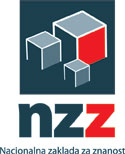 Travel Information
Travel Information
How to reach Split, Croatia
By air
Croatia has eight major airports: Zagreb, Split, Dubrovnik, Zadar, Pula, Rijeka (on the island of Krk), Brac and Osijek. You'll almost certainly be flying to one of the first three. During August, due to traffic congestion, the best choice is probably to fly to Split as your final destination.
If you arrive in Zagreb as your final airplane destination, take Croatia Airlines bus (30 kuna) to bus station and there take bus to Split. There may be some delays to reach Split due to high tourist season in August.
If you want to take train from Zagreb to Split then, from bus station where Croatia Airlines bus stops, take tram to Glavni kolodvor, which is the train station.
If you arrive in Split by plane, take Croatia Airlines bus (30 kuna) to the centre of Split.
By Bus/Coach
There are coach services from all nearby European countries - Slovenia, Italy, Austria, Germany, Czech Republic and Switzerland - into Croatia. You will be able to travel by bus to Zagreb. Zagreb Bus Terminal has a website where you can check timetables.
Coach Travel In Europe: see the Eurolines website for ticket and timetable information for travel from your home country in Europe.
By train
The main destinations you can reach by rail are Zagreb, Pula, Rijeka and Split.
Website for train travel in Croatia is the HZ webiste
Website for train travel in Europe is the Die Bahn website.
By ship
In Split you can come from Ancona, Italy by ship. More informations you can find here:
http://www.jadrolinija.hr/default.aspx?lang=2
or
http://www.splittours.hr/index.php?option=com_content&view=article&id=17&Itemid=8&lang=en
How to reach the student hostel “Hostel Spinut”
When you arrive in Split you will be in the very centre; bus station, airport bus station and train station are all within walking distance of the Pazar station for city buses. Bus for Spinut is on the opposite side of the road looking from the sea, from where you can take bus 17 to its last stop, Spinut, and arrive at the hostel. The ticket price is presently 10 kunas, which should be paid to the bus driver. A taxi can be shared with several persons going to “Hostel Spinut”. The price should be around 60 kunas from Pazar station to “Hostel Spinut”. Hostel is also within walking distance to the city centre; it takes less then 20 min
How to reach MedLIS
For detailed instructions and maps click here (pdf 800 kB)
Visa
To facilitate visa procedures, international participants may be sent an official letter of invitation on the condition that they send their registration forms. In such case, the participants must apply to the nearest Croatian Embassy or Consulate in their country.
Climate
In August, average high is 29°C and average low temperature is 21°C. Average precipitation is 5.1 cm.
Time
Croatia's standard time is 1 hour ahead of GMT.
Electricity
220 V, 50 Hz
Currency
Kuna (1 kuna = 100 lipa). Foreign currency can be exchanged in banks, exchange offices, travel agencies, hotels, camps and marinas. 1€ = 7.26 HRK, $AU1 = 4.86 HRK
Communication
All day internet connection is available in MedILS and the student hostel.
For local calls buy telephone cards. Split's area code is 021. When calling abroad from Croatia, first dial the International code 00 and then country code and the number.
About Split:
The largest tourist region in Dalmatia is the part around Split, its largest city, a region that covers only one county, the County of Split-Dalmatia. This is the centre and the true heart of Dalmatia, where the majority of its inhabitants live, the main Dalmatian islands are located, and the beaches are the most beautiful. Here is where most of the precious cultural monuments are to be found as well as two of five Croatian localities included in the UNESCO List of World Heritage: the historical nucleus of Split with Diocletian’s Palace and the historical city of Trogir. If Dalmatia is indeed, as many say, the true, primeval Mediterranean, then its central part around Split is, in itself, the heart of the entire Mediterranean.
Click here for more information:
(link: http://www.croatia.hr/English/Destinacije/RegijaOpcenito.aspx?idDestination=4)





